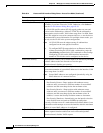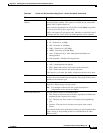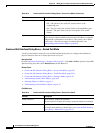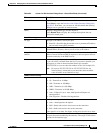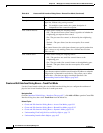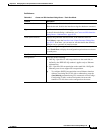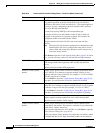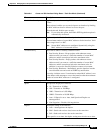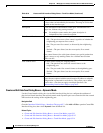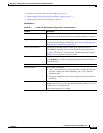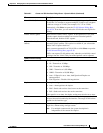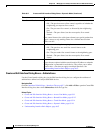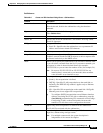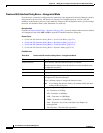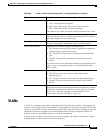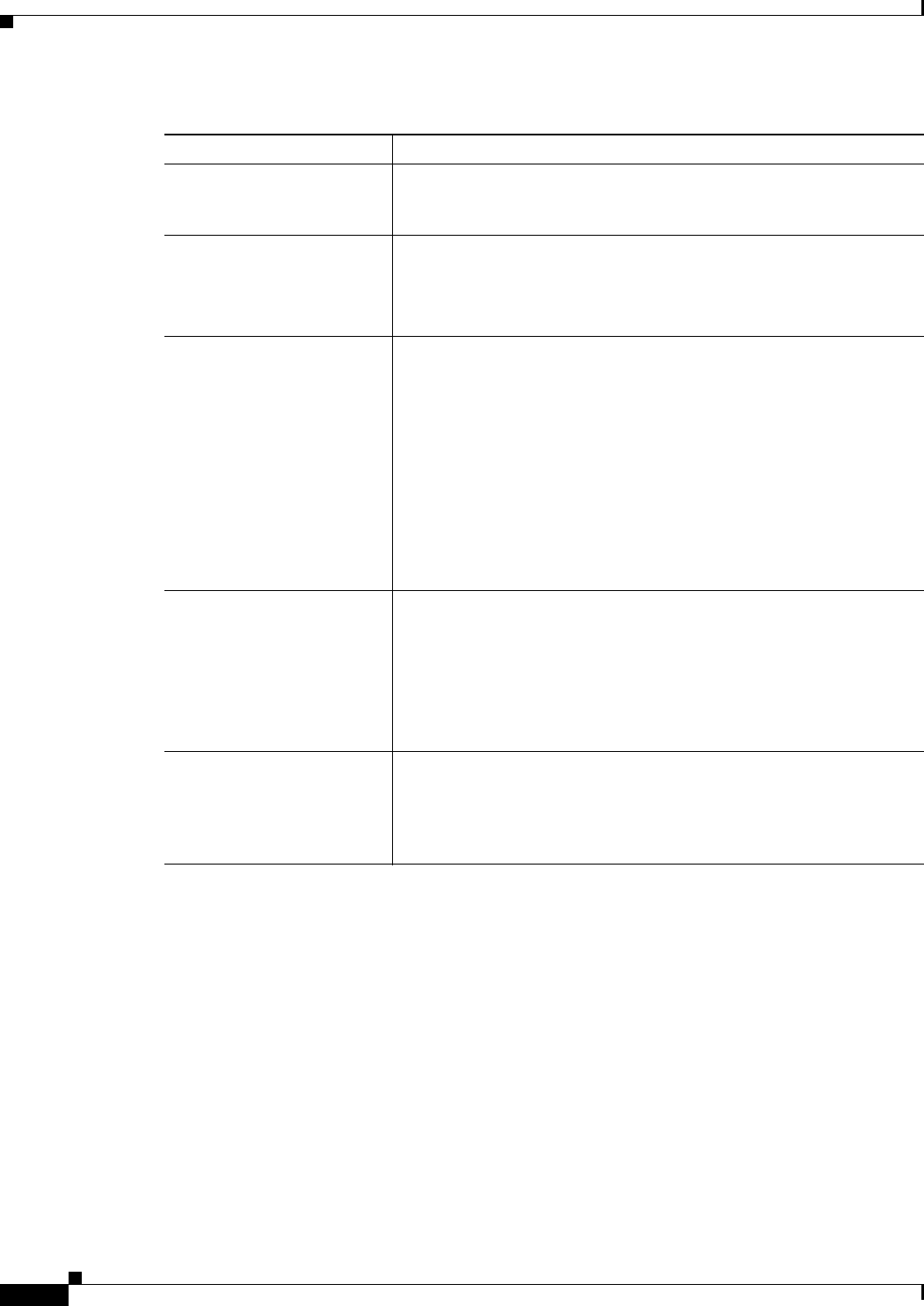
65-18
User Guide for Cisco Security Manager 4.4
OL-28826-01
Chapter 65 Managing Cisco Catalyst Switches and Cisco 7600 Series Routers
Interfaces
Create and Edit Interface Dialog Boxes—Dynamic Mode
Use the Create Interface dialog box (or the Edit Interface dialog box) to configure the attributes of
physical and virtual interfaces that run in dynamic mode. Dynamic ports can convert the link into a trunk
link based on the settings of the neighboring port.
Navigation Path
Go to the Interfaces/VLANs Page—Interfaces Tab, page 65-7, click Add or Edit to open the Create/Edit
Interface dialog box, then select Dynamic from the Mode list.
Related Topics
• Create and Edit Interface Dialog Boxes—Access Port Mode, page 65-9
• Create and Edit Interface Dialog Boxes—Routed Port Mode, page 65-12
• Create and Edit Interface Dialog Boxes—Trunk Port Mode, page 65-14
MTU The maximum transmission unit, which refers to the largest packet size
(in bytes) that can be handled by the interface. The range of valid values
depends on the interface type.
Description A text description of the interface. Enter up to 240 characters on a
single line, without using carriage returns.
Note For multiple context mode, the system description is
independent of the context description.
Flow Control Receive The flow control setting for incoming frames:
• Off—The port does not use flow control, regardless of whether the
neighboring port requests flow control.
• On—The port uses flow control, as dictated by the neighboring
port.
• Desired—The port allows, but does not require, flow control
frames.
Flow control frames (also called pause frames) are special packets that
signal a source to stop sending frames for a defined interval when
buffers are full.
Flow Control Send The flow control setting for outgoing frames:
• Off—The port does not send flow control frames to the
neighboring port.
• On—The port sends flow control frames to the neighboring port.
• Desired—The port allows, but does not require, flow control
frames.
Roles Lists the interface roles associated with the interface. Interface roles are
objects that are replaced with the actual interface IP addresses when the
configuration is generated for each device. They allow you to define
generic rules—ones that can apply to multiple interfaces. See
Understanding Interface Role Objects, page 6-67.
Table 65-6 Create and Edit Interface Dialog Boxes—Trunk Port Mode (Continued)
Element Description



